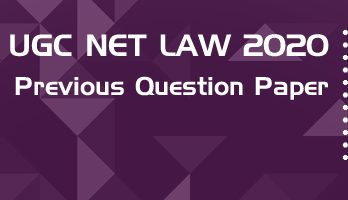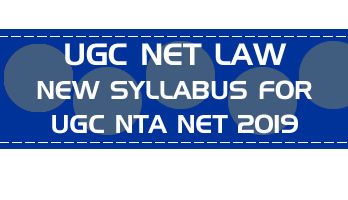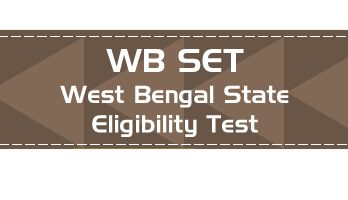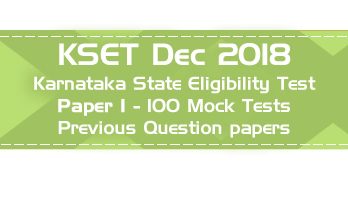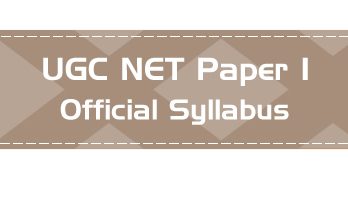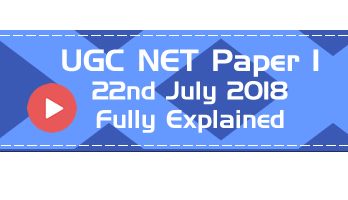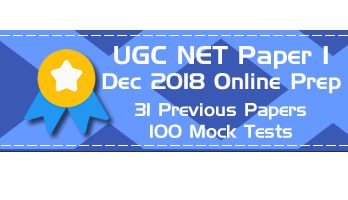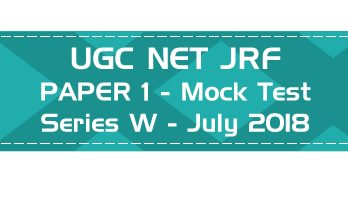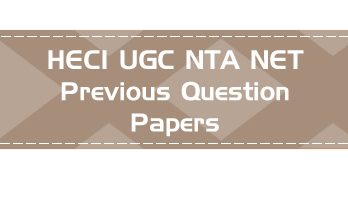- Latest Pattern Mock Tests including comprehension based questions
- Previous Question Papers with Answer Keys - From 2004 till the most recent exam
- 75 Full Length Mock Tests - New Pattern Paper II, with 100 questions each
- 50 Mini Practice Mock tests - with 25 questions each
- Unlimited Practice - New Questions in every attempt of all mocks
- Questions & Answer Choices randomly shuffled in every attempt for better practice
- Database of over 11000+ MCQs covering the entire syllabus
- Unlimited access and practice for one year from the date of purchase
- Accessible 24 x 7 via Smart-Phone browsers and Desktops
Authentic Feedback from previous LawMint users :
I got AIR 21 in CLAT PG. Thank you so much. Your mocks helped me a lot in my preparation 🙂 - Ayushi Jain
I have subscribed to your CLAT PG program and got AIR 36 in this year CLAT PG. I have also secured AIR 54 in AILET PG exam. I would like to thank you. Your mock paper really helps a lot - Shrashank Tripathi
I would like to thank you for the CLAT PG LLM COURSE. Practising mock tests there helped me in getting confidence and hence I was able to get AIR 45 in CLAT PG LLM - Akshay Awasthi
A year back, I relied on the IIT Kharagpur RGSOIPL mock test series by LawMint to prepare for my RGSOIPL entrance test. Few months back, I relied on your UGC NET Law series to prepare for UGC NET. I was the topper of the RGSOIPL entrance, and have cracked JRF in UGC NET. All thanks to LawMint - Anshuman Sahoo
"I got AIR 18 in CLAT PG and General Category rank 28 in AILET PG. I want to thank you for helping me practice well in controlled conditions from any place. It gave me a lot of confidence and I took the tests while travelling too. I also made it to IIT Kharagpur." - Vinodharani
"Lawmint has been of great help to me in securing AIR 25 in AILET PG and AIR 29 in CLAT PG examinations. The subjective and objective approach of the test series kept me up to date with the latest exam pattern." - Bhawna Nanda
"I, Nimmy Saira Zachariah joined you clat test series. I cleared AILET PG with 30th rank. Your test series were of immense help as it gave me clear idea of where my preparations stand thank you once again law mint." - Nimmy S Z
"Hey guys. Where do I start? If I thought that getting AIR 59 in Clat PG was it, then how wrong I was. With Lawmint now I have cracked UGC NET as well." - Joyanta Chakraborty
Note : Answer Keys to all Previous Question Papers published on LawMint are available to registered users of LawMint.com’s Online Practice Packs.
Check out all the HECI NTA NET or UGC CBSE NET Paper 1 previous question papers here : Previous Papers & Mock Tests
Note : UGC has rolled out a revised syllabus for both Papers 1 & 2 from Jan 2019 onward.
Which of the following set of statements best describes the nature and objectives of teaching ? Indicate your answer by selecting from the code.
(a) Teaching and learning are integrally related.
(b) There is no difference between teaching and training.
(c) Concern of all teaching is to ensure some kind of transformation in students.
(d) All good teaching is formal in nature.
(e) A teacher is a senior person.
(f) Teaching is a social act whereas learning is a personal act.
– (a), (b) and (d)
– (b), (c) and (e)
– (a), (c) and (f)
– (d), (e) and (f)
Which of the following learner characteristics is highly related to effectiveness of teaching ?
– Prior experience of the learner
– Educational status of the parents of the learner
– Peer groups of the learner
– Family size from which the learner comes.
In the two sets given below Set – I indicates methods of teaching while Set – II provides the basic requirements for success/effectiveness. Match the two sets and indicate your answer by choosing from the code :
Set – I (Method of teaching)
(a) Lecturing
(b) Discussion in groups
(c) Brainstorming
(d) Programmed Instructional
Set – II (Basic requirements for success/effectiveness)
(i) Small step presentation with feedback provided
(ii) Production of large number of ideas
(iii) Content delivery in a lucid language
(iv) Use of teaching-aids procedure
(v) Theme based interaction among participants
Choose the answer corresponding to the order (a) (b) (c) (d)
– (i) (ii) (iii) (iv)
– (ii) (iii) (iv) (v)
– (iii) (v) (ii) (i)
– (iv) (ii) (i) (iii)
From the list of evaluation procedures given below identify those which will be called ‘formative evaluation’. Indicate your answer by choosing from the code :
(a) A teacher awards grades to students after having transacted the course work.
(b) During interaction with students in the classroom, the teacher provides corrective feedback.
(c) The teacher gives marks to students on a unit test.
(d) The teacher clarifies the doubts of students in the class itself.
(e) The overall performance of a students is reported to parents at every three months interval.
(f) The learner’s motivation is raised by the teacher through a question-answer session.
– (a), (b) and (c)
– (b), (c) and (d)
– (a), (c) and (e)
– (b), (d) and (f)
Assertion (A) : All teaching should aim at ensuring learning.
Reason (R) : All learning results from teaching.
– Both (A) and (R) are true, and (R) is the correct explanation of (A).
– Both (A) and (R) are true, but (R) is not the correct explanation of (A).
– (A) is true, but (R) is false.
– (A) is false, but (R) is true.
There are two sets given below. Set – I specifies the types of research, while Set – II indicates their characteristics. Match the two and give your answer by selecting the appropriate code.
Set – I (Research types)
(a) Fundamental research
(b) Applied research
(c) Action research
(d) Evaluative research
Set – II (Characteristics)
(i) Finding out the extent of perceived impact of an intervention
(ii) Developing an effective explanation through theory building
(iii) Improving an existing situation through use of interventions
(iv) Exploring the possibility of a theory for use in various situations
(v) Enriching technological resources
Choose the answer corresponding to the order (a) (b) (c) (d)
– (ii) (iv) (iii) (i)
– (v) (iv) (iii) (ii)
– (i) (ii) (iii) (iv)
– (ii) (iii) (iv) (v)
Which of the sets of activities best indicate the cyclic nature of action research strategy ?
– Reflect, Observe, Plan, Act
– Observe, Act, Reflect, Plan
– Act, Plan, Observe, Reflect
– Plan, Act, Observe, Reflect
Which of the following sequences of research steps is nearer to scientific method ?
– Suggested solution of the problem, Deducing the consequences of the solution, Perceiving the problem situation, Location of the difficulty and testing the solutions.
– Perceiving the problem situation, Locating the actual problem and its definition, Hypothesizing, Deducing the consequences of the suggested solution and Testing the hypothesis in action.
– Defining a problem, Identifying the causes of the problem, Defining a population, Drawing a sample, Collecting data and Analysing results.
– Identifying the causal factors, Defining the problem, Developing a hypothesis, Selecting a sample, Collecting data and arriving at generalizations and Conclusions.
The problem of ‘research ethics’ is concerned with which aspect of research activities ?
– Following the prescribed format of a thesis
– Data analysis through qualitative or quantitative techniques
– Defining the population of research
– Evidence based research reporting
In which of the following activities, potential for nurturing creative and critical thinking is relatively greater ?
– Preparing research summary
– Presenting a seminar paper
– Participation in research conference
– Participation in a workshop
Read the following passage carefully and answer the question :
If India has to develop her internal strengths, the nation has to focus on the technological imperatives, keeping in mind three dynamic dimensions : the people, the overall economy and the strategic interests. These technological imperatives also take into account a ‘fourth’ dimension, time, an offshoot of modern day dynamism in business, trade, and technology that leads to continually shifting targets. We believe that technological strengths are especially crucial in dealing with this fourth dimension underlying continuous change in the aspirations of the people, the economy in the global context, and the strategic interests.
The progress of technology lies at the heart of human history. Technological strengths are the key to creating more productive employment in an increasingly competitive market place and to continually upgrade human skills. Without a pervasive use of technologies, we cannot achieve overall development of our people in the years to come. The direct linkages of technology to the nation’s strategic strengths are becoming more and more clear, especially since 1990s. India’s own strength in a number of core areas still puts it in a position of reasonable strength in geo-political context.
Any nation aspiring to become a developed one needs to have strengths in various strategic technologies and also the ability to continually upgrade them through its own creative strengths. For people-oriented actions as well, whether for the creation of large scale productive employment or for ensuring nutritional and health security for people, or for better living conditions, technology is the only vital input. The absence of greater technological impetus could lead to lower productivity and wastage of precious natural resources. Activities with low productivity or low value addition, in the final analysis hurt the poorest most. The technological imperatives to lift our people to a new life, and to a life they are entitled to is important.
India, aspiring to become a major economic power in terms of trade and increase in GDP, cannot succeed on the strength of turnkey projects designed and built abroad or only through large-scale imports of plant machinery, equipment and know how. Even while being alive to the short-term realities, medium and long-term strategies to develop core technological strengths within our industry are vital for envisioning a developed India.
According to the above passage, which of the following are indicative of the fourth dimension ?
(a) Aspirations of people
(b) Modern day dynamism
(c) Economy in the global context
(d) Strategic interests
– (a), (b) and (c) only
– (b), (c) and (d) only
– (a), (c) and (d) only
– (a), (b) and (d) only
Read the following passage carefully and answer the question :
If India has to develop her internal strengths, the nation has to focus on the technological imperatives, keeping in mind three dynamic dimensions : the people, the overall economy and the strategic interests. These technological imperatives also take into account a ‘fourth’ dimension, time, an offshoot of modern day dynamism in business, trade, and technology that leads to continually shifting targets. We believe that technological strengths are especially crucial in dealing with this fourth dimension underlying continuous change in the aspirations of the people, the economy in the global context, and the strategic interests.
The progress of technology lies at the heart of human history. Technological strengths are the key to creating more productive employment in an increasingly competitive market place and to continually upgrade human skills. Without a pervasive use of technologies, we cannot achieve overall development of our people in the years to come. The direct linkages of technology to the nation’s strategic strengths are becoming more and more clear, especially since 1990s. India’s own strength in a number of core areas still puts it in a position of reasonable strength in geo-political context.
Any nation aspiring to become a developed one needs to have strengths in various strategic technologies and also the ability to continually upgrade them through its own creative strengths. For people-oriented actions as well, whether for the creation of large scale productive employment or for ensuring nutritional and health security for people, or for better living conditions, technology is the only vital input. The absence of greater technological impetus could lead to lower productivity and wastage of precious natural resources. Activities with low productivity or low value addition, in the final analysis hurt the poorest most. The technological imperatives to lift our people to a new life, and to a life they are entitled to is important.
India, aspiring to become a major economic power in terms of trade and increase in GDP, cannot succeed on the strength of turnkey projects designed and built abroad or only through large-scale imports of plant machinery, equipment and know how. Even while being alive to the short-term realities, medium and long-term strategies to develop core technological strengths within our industry are vital for envisioning a developed India.
More productive employment demands :
– Pervasive use of technology
– Limiting competitive market place
– Geo-political considerations
– Large industries
Read the following passage carefully and answer the question :
If India has to develop her internal strengths, the nation has to focus on the technological imperatives, keeping in mind three dynamic dimensions : the people, the overall economy and the strategic interests. These technological imperatives also take into account a ‘fourth’ dimension, time, an offshoot of modern day dynamism in business, trade, and technology that leads to continually shifting targets. We believe that technological strengths are especially crucial in dealing with this fourth dimension underlying continuous change in the aspirations of the people, the economy in the global context, and the strategic interests.
The progress of technology lies at the heart of human history. Technological strengths are the key to creating more productive employment in an increasingly competitive market place and to continually upgrade human skills. Without a pervasive use of technologies, we cannot achieve overall development of our people in the years to come. The direct linkages of technology to the nation’s strategic strengths are becoming more and more clear, especially since 1990s. India’s own strength in a number of core areas still puts it in a position of reasonable strength in geo-political context.
Any nation aspiring to become a developed one needs to have strengths in various strategic technologies and also the ability to continually upgrade them through its own creative strengths. For people-oriented actions as well, whether for the creation of large scale productive employment or for ensuring nutritional and health security for people, or for better living conditions, technology is the only vital input. The absence of greater technological impetus could lead to lower productivity and wastage of precious natural resources. Activities with low productivity or low value addition, in the final analysis hurt the poorest most. The technological imperatives to lift our people to a new life, and to a life they are entitled to is important.
India, aspiring to become a major economic power in terms of trade and increase in GDP, cannot succeed on the strength of turnkey projects designed and built abroad or only through large-scale imports of plant machinery, equipment and know how. Even while being alive to the short-term realities, medium and long-term strategies to develop core technological strengths within our industry are vital for envisioning a developed India.
Absence of technology would lead to :
(a) Less pollution (b) Wastage of precious natural resources
(c) Low value addition (d) Hurting the poorest most
– (a), (b) and (c) only
– (b), (c) and (d) only
– (a), (b) and (d) only
– (a), (c) and (d) only
Read the following passage carefully and answer the question :
If India has to develop her internal strengths, the nation has to focus on the technological imperatives, keeping in mind three dynamic dimensions : the people, the overall economy and the strategic interests. These technological imperatives also take into account a ‘fourth’ dimension, time, an offshoot of modern day dynamism in business, trade, and technology that leads to continually shifting targets. We believe that technological strengths are especially crucial in dealing with this fourth dimension underlying continuous change in the aspirations of the people, the economy in the global context, and the strategic interests.
The progress of technology lies at the heart of human history. Technological strengths are the key to creating more productive employment in an increasingly competitive market place and to continually upgrade human skills. Without a pervasive use of technologies, we cannot achieve overall development of our people in the years to come. The direct linkages of technology to the nation’s strategic strengths are becoming more and more clear, especially since 1990s. India’s own strength in a number of core areas still puts it in a position of reasonable strength in geo-political context.
Any nation aspiring to become a developed one needs to have strengths in various strategic technologies and also the ability to continually upgrade them through its own creative strengths. For people-oriented actions as well, whether for the creation of large scale productive employment or for ensuring nutritional and health security for people, or for better living conditions, technology is the only vital input. The absence of greater technological impetus could lead to lower productivity and wastage of precious natural resources. Activities with low productivity or low value addition, in the final analysis hurt the poorest most. The technological imperatives to lift our people to a new life, and to a life they are entitled to is important.
India, aspiring to become a major economic power in terms of trade and increase in GDP, cannot succeed on the strength of turnkey projects designed and built abroad or only through large-scale imports of plant machinery, equipment and know how. Even while being alive to the short-term realities, medium and long-term strategies to develop core technological strengths within our industry are vital for envisioning a developed India.
The advantage of technological inputs would result in :
– Unbridled technological growth
– Importing plant machinery
– Sidelining environmental issues
– Lifting our people to a life of dignity
Read the following passage carefully and answer the question :
If India has to develop her internal strengths, the nation has to focus on the technological imperatives, keeping in mind three dynamic dimensions : the people, the overall economy and the strategic interests. These technological imperatives also take into account a ‘fourth’ dimension, time, an offshoot of modern day dynamism in business, trade, and technology that leads to continually shifting targets. We believe that technological strengths are especially crucial in dealing with this fourth dimension underlying continuous change in the aspirations of the people, the economy in the global context, and the strategic interests.
The progress of technology lies at the heart of human history. Technological strengths are the key to creating more productive employment in an increasingly competitive market place and to continually upgrade human skills. Without a pervasive use of technologies, we cannot achieve overall development of our people in the years to come. The direct linkages of technology to the nation’s strategic strengths are becoming more and more clear, especially since 1990s. India’s own strength in a number of core areas still puts it in a position of reasonable strength in geo-political context.
Any nation aspiring to become a developed one needs to have strengths in various strategic technologies and also the ability to continually upgrade them through its own creative strengths. For people-oriented actions as well, whether for the creation of large scale productive employment or for ensuring nutritional and health security for people, or for better living conditions, technology is the only vital input. The absence of greater technological impetus could lead to lower productivity and wastage of precious natural resources. Activities with low productivity or low value addition, in the final analysis hurt the poorest most. The technological imperatives to lift our people to a new life, and to a life they are entitled to is important.
India, aspiring to become a major economic power in terms of trade and increase in GDP, cannot succeed on the strength of turnkey projects designed and built abroad or only through large-scale imports of plant machinery, equipment and know how. Even while being alive to the short-term realities, medium and long-term strategies to develop core technological strengths within our industry are vital for envisioning a developed India.
Envisioning a developed India requires :
– Aspiration to become a major economic player
– Dependence upon projects designed abroad
– Focus on short-term projects
– Development of core technological strengths
Differentiation between acceptance and non-acceptance of certain stimuli in classroom communication is the basis of :
– selective expectation of performance
– selective affiliation to peer groups
– selective attention
– selective morality
Assertion (A) : The initial messages to students in the classroom by a teacher need not be critical to establish interactions later.
Reason (R) : More control over the communication process means more control over what the students are learning.
– Both (A) and (R) are true, and (R) is the correct explanation of (A).
– Both (A) and (R) are true, but (R) is not the correct explanation of (A).
– (A) is true, but (R) is false.
– (A) is false, but (R) is true.
Assertion (A) : To communicate well in the classroom is a natural ability.
Reason (R) : Effective teaching in the classroom demands knowledge of the communication process.
– Both (A) and (R) are true, and (R) is the correct explanation of (A).
– Both (A) and (R) are true, but (R) is not the correct explanation of (A).
– (A) is true, but (R) is false.
– (A) is false, but (R) is true.
Assertion (A) : Classroom communication is a transactional process.
Reason (R) : A teacher does not operate under the assumption that students’ responses are purposive.
– Both (A) and (R) are true, and (R) is the correct explanation of (A).
– Both (A) and (R) are true, but (R) is not the correct explanation of (A).
– (A) is true, but (R) is false.
– (A) is false, but (R) is true.
Which of the following set of statements is correct for describing the human communication process ?
(a) Non-verbal communication can stimulate ideas.
(b) Communication is a learnt ability.
(c) Communication is not a universal panacea.
(d) Communication cannot break-down.
(e) More communication means more effective learning by students.
(f) Value of what is learnt through classroom communication is not an issue for students.
– (a), (c), (e) and (f)
– (b), (d), (e) and (f)
– (a), (b), (c) and (d)
– (a), (d), (e) and (f)
The next term in the series : -1, 5, 15, 29, ? , … is :
– 36
– 47
– 59
– 63
The next term in the series ABD, DGK, HMS, MTB, SBL, ? , … is :
– ZKU
– ZCA
– ZKW
– KZU
If VARANASI is coded as WCUESGZQ, then the code of KOLKATA will be :
– LOQOZEH
– HLZEOOQ
– ZELHOQO
– LQOOFZH
Introducing Rakesh to her husband a women said, “His brother’s father is the only son of my grandfather”. The woman is related to Rakesh as :
– Aunt
– Mother
– Sister
– Daughter
Two numbers are in the ratio 2 : 5. If 16 is added to both the numbers, their ratio becomes 1 : 2. The numbers are :
– 16, 40
– 20, 50
– 28, 70
– 32, 80
Superiority of intellect depends upon its power of concentration on one theme in the same way as a concave mirror collects all the rays that strike upon it into one point. What type of reasoning is entailed in the above statement ?
– Mathematical
– Psychological
– Analogical
– Deductive
Given below are two premises (A and B). Four conclusions are drawn from them. Select the code that states validly drawn conclusion(s) (taking the premises individually or jointly).
Premises :
(A) Most of the dancers are physically fit.
(B) Most of the singers are dancers.
Conclusions :
(a) Most of the singers are physically fit.
(b) Most of the dancers are singers.
(c) Most of the physically fit persons are dancers.
(d) Most of the physically fit persons are singers.
– (a) and (b)
– (b) and (c)
– (c) and (d)
– (d) and (a)
Which one among the following is a presupposition in inductive reasoning ?
– Law of identity
– Unchangeability in nature
– Harmony in nature
– Uniformity of nature
If the proposition ‘domestic animals are hardly ferocious’ is taken to be false, which of the following proposition/propositions can be claimed to be certainly true ? Select the correct code :
(a) All domestic animals are ferocious.
(b) Most of the domestic animals are ferocious.
(c) No domestic animal is ferocious.
(d) Some domestic animals are non-ferocious.
– (a) and (b)
– (a) only
– (c) and (d)
– (b) only
Which one of the following statements is not correct in the context of Venn diagram method ?
– It is a method of testing the validity of arguments.
– It represents both the premises of a syllogism in one diagram.
– It requires two overlapping circles for the two premises of a standard-form categorical syllogism.
– It can be used to represent classes as well as propositions.
The table below embodies data on the production, exports and per capita consumption of rice in country P for the five years from 2012 to 2016. Answer the question below, based on the data contained in the table.
Year-wiseProduction, Exports and Per Capita Consumption of Rice | |||
Year | Production (in million kg) | Exports (in million kg) | Per Capita Consumption (in kg) |
2012 | 186.5 | 114 | 36.25 |
2013 | 202 | 114 | 35.2 |
2014 | 238 | 130 | 38.7 |
2015 | 221 | 116 | 40.5 |
2016 | 215 | 88 | 42 |
Where, Per Capita Consumption=(Consumption in million kg)/(Population in million) and consumption (in million kg)= Production – Exports.
The percentage increase in the consumption of rice over the previous year was the highest in which year ?
– 2013
– 2014
– 2015
– 2016
The table below embodies data on the production, exports and per capita consumption of rice in country P for the five years from 2012 to 2016. Answer the question below, based on the data contained in the table.
Year-wiseProduction, Exports and Per Capita Consumption of Rice | |||
Year | Production (in million kg) | Exports (in million kg) | Per Capita Consumption (in kg) |
2012 | 186.5 | 114 | 36.25 |
2013 | 202 | 114 | 35.2 |
2014 | 238 | 130 | 38.7 |
2015 | 221 | 116 | 40.5 |
2016 | 215 | 88 | 42 |
Where, Per Capita Consumption=(Consumption in million kg)/(Population in million) and consumption (in million kg)= Production – Exports.
What is the population of the country in the year 2014 (in million) ?
– 2.64
– 2.72
– 2.79
– 2.85
The table below embodies data on the production, exports and per capita consumption of rice in country P for the five years from 2012 to 2016. Answer the question below, based on the data contained in the table.
Year-wiseProduction, Exports and Per Capita Consumption of Rice | |||
Year | Production (in million kg) | Exports (in million kg) | Per Capita Consumption (in kg) |
2012 | 186.5 | 114 | 36.25 |
2013 | 202 | 114 | 35.2 |
2014 | 238 | 130 | 38.7 |
2015 | 221 | 116 | 40.5 |
2016 | 215 | 88 | 42 |
Where, Per Capita Consumption=(Consumption in million kg)/(Population in million) and consumption (in million kg)= Production – Exports.
The ratio of exports to consumption in the given period was the highest in the year :
– 2012
– 2013
– 2014
– 2015
The table below embodies data on the production, exports and per capita consumption of rice in country P for the five years from 2012 to 2016. Answer the question below, based on the data contained in the table.
Year-wise Production, Exports and Per Capita Consumption of Rice | |||
Year | Production (in million kg) | Exports (in million kg) | Per Capita Consumption (in kg) |
2012 | 186.5 | 114 | 36.25 |
2013 | 202 | 114 | 35.2 |
2014 | 238 | 130 | 38.7 |
2015 | 221 | 116 | 40.5 |
2016 | 215 | 88 | 42 |
Where, Per Capita Consumption=(Consumption in million kg)/(Population in million) and consumption (in million kg)= Production – Exports.
In which year, the population of country was the highest ?
– 2013
– 2014
– 2015
– 2016
The table below embodies data on the production, exports and per capita consumption of rice in country P for the five years from 2012 to 2016. Answer the question below, based on the data contained in the table.
Year-wiseProduction, Exports and Per Capita Consumption of Rice | |||
Year | Production (in million kg) | Exports (in million kg) | Per Capita Consumption (in kg) |
2012 | 186.5 | 114 | 36.25 |
2013 | 202 | 114 | 35.2 |
2014 | 238 | 130 | 38.7 |
2015 | 221 | 116 | 40.5 |
2016 | 215 | 88 | 42 |
Where, Per Capita Consumption=(Consumption in million kg)/(Population in million) and consumption (in million kg)= Production – Exports.
What is the average consumption of rice (in million kg) over the years 2012-2016 ?
– 104
– 102.1
– 108
– 100.1
Which of the following statements, regarding the term ICT is/are TRUE ?
P : ICT is an acronym that stands for Indian Classical Technology.
Q : Converging technologies that exemplify ICT include the merging of audio-visual, telephone and computer networks through a common cabling system.
– P only
– Q only
– P and Q
– Neither P nor Q
A new Laptop has been produced that weighs less, is smaller and uses less power than previous Laptop models. Which of the following technologies has been used to accomplish this ?
– Universal Serial Bus Mouse
– Faster Random Access Memory
– Blu Ray Drive
– Solid State Hard Drive
Given the following email fields, which of the email addresses will ‘swami’ be able to see when he receives the message ?
To… ram@test.com
Cc… raj@test.com; ravi@test.com
Bcc… swami@test.com; rama@test.com
– ram@test.com
– ram@test.com; raj@test.com; ravi@test.com
– ram@test.com; rama@test.com
– ram@test.com; rama@test.com; raj@test.com; ravi@test.com
Put the following units of storage into the correct order, starting with the smallest unit first and going down to the largest unit :
(a) Kilobyte
(b) Byte
(c) Megabyte
(d) Terabyte
(e) Gigabyte
(f) Bit
– (f), (b), (a), (c), (d), (e)
– (f), (b), (a), (d), (e), (c)
– (f), (b), (a), (c), (e), (d)
– (f), (b), (a), (d), (c), (e)
With regard to computer memory, which of the following statement(s) is/are TRUE ?
P : Read Only Memory (ROM) is ‘volatile’ memory.
Q : Random Access Memory (RAM) is ‘volatile’ memory.
R : Secondary Memory is ‘volatile’ memory.
– P only
– Q only
– P and Q only
– P and R only
‘Fly ash’ produced in thermal power plants is an ecofriendly resource for use in :
(a) agriculture as micro-nutrient
(b) wasteland development
(c) dam and water holding structures
(d) brick industry
– (a), (b) and (d) only
– (b), (c) and (d) only
– (a), (c) and (d) only
– (a), (b), (c) and (d)
Which of the following types of natural disasters has no definite beginning and end ?
– Earthquakes
– Landslides
– Hurricanes
– Droughts
Assertion (A) : Indoor air pollution is a serious health hazard.
Reason (R) : The dispersal of air pollutants is rather limited in indoor environment.
– Both (A) and (R) are true and (R) is the correct explanation of (A).
– Both (A) and (R) are true but (R) is not the correct explanation of (A).
– (A) is true and (R) is false.
– Both (A) and (R) are false.
In terms of their contribution to the total power generation in India, identify the correct sequence of energy sources – Thermal Power Plants (TPP), Large Hydropower Projects (LHP), Nuclear Energy (NE) and Renewable Energy (RE) which includes solar energy, wind energy, biomass and small hydropower projects.
– TPP > RE > LHP > NE
– TPP > LHP > RE > NE
– LHP > TPP > RE > NE
– LHP > TPP > NE > RE
Which of the following is considered as major source of pollution in rivers of India ?
– Unregulated small scale industry
– Untreated sewage
– Agricultural run-off
– Thermal power plants
India has the largest Higher Education System in the World after :
(a) The United States of America
(b) Australia
(c) China
(d) United Kingdom (U.K.)
– (a), (b), (c) and (d)
– (a), (b) and (c) only
– (a), (c) and (d) only
– (a) and (c) only
Prime Minister Research Fellowship is for students pursuing Ph.D programme in :
– State and Central Universities
– Central Universities, IISc, IITs, NITs, IISERs and IIITs
– IISc, IITs, NITs, IISERs, IIITs, State and Central Universities
– IITs and IISc
Leader of the Opposition is a member of committees which select :
(a) the Central Information Commissioner
(b) the Central Vigilance Commissioner
(c) the Chairperson of National Human Rights Commission
(d) the Chairperson of National Commission for Women
– (a), (b), (c) and (d)
– (a), (b) and (c) only
– (a), (c) and (d) only
– (a), (b) and (d) only
Which of the following statements are correct about gender budgeting ?
(a) It is a separate budget addressing the specific needs of women.
(b) It assesses the impact of government budget on women.
(c) It is an accounting exercise.
(d) It is another budgeting innovation.
– (b) and (d) only
– (a) and (d) only
– (a), (c) and (d) only
– (b), (c) and (d) only
Which of the following are the barriers to citizen-centric administration in India ?
(a) Wooden and inflexible attitude of the civil servants
(b) Ineffective implementation of laws and rules
(c) Awareness of rights and duties of citizens
(d) Lack of job opportunities for the youth
– (a), (b), (c) and (d)
– (a), (b) and (c) only
– (a), (b) and (d) only
– (a) and (b) only
- Latest Pattern Mock Tests including comprehension based questions
- Previous Question Papers with Answer Keys - From 2004 till the most recent exam
- 75 Full Length Mock Tests - New Pattern Paper II, with 100 questions each
- 50 Mini Practice Mock tests - with 25 questions each
- Unlimited Practice - New Questions in every attempt of all mocks
- Questions & Answer Choices randomly shuffled in every attempt for better practice
- Database of over 11000+ MCQs covering the entire syllabus
- Unlimited access and practice for one year from the date of purchase
- Accessible 24 x 7 via Smart-Phone browsers and Desktops
Authentic Feedback from previous LawMint users :
I got AIR 21 in CLAT PG. Thank you so much. Your mocks helped me a lot in my preparation 🙂 - Ayushi Jain
I have subscribed to your CLAT PG program and got AIR 36 in this year CLAT PG. I have also secured AIR 54 in AILET PG exam. I would like to thank you. Your mock paper really helps a lot - Shrashank Tripathi
I would like to thank you for the CLAT PG LLM COURSE. Practising mock tests there helped me in getting confidence and hence I was able to get AIR 45 in CLAT PG LLM - Akshay Awasthi
A year back, I relied on the IIT Kharagpur RGSOIPL mock test series by LawMint to prepare for my RGSOIPL entrance test. Few months back, I relied on your UGC NET Law series to prepare for UGC NET. I was the topper of the RGSOIPL entrance, and have cracked JRF in UGC NET. All thanks to LawMint - Anshuman Sahoo
"I got AIR 18 in CLAT PG and General Category rank 28 in AILET PG. I want to thank you for helping me practice well in controlled conditions from any place. It gave me a lot of confidence and I took the tests while travelling too. I also made it to IIT Kharagpur." - Vinodharani
"Lawmint has been of great help to me in securing AIR 25 in AILET PG and AIR 29 in CLAT PG examinations. The subjective and objective approach of the test series kept me up to date with the latest exam pattern." - Bhawna Nanda
"I, Nimmy Saira Zachariah joined you clat test series. I cleared AILET PG with 30th rank. Your test series were of immense help as it gave me clear idea of where my preparations stand thank you once again law mint." - Nimmy S Z
"Hey guys. Where do I start? If I thought that getting AIR 59 in Clat PG was it, then how wrong I was. With Lawmint now I have cracked UGC NET as well." - Joyanta Chakraborty
Note : Answer Keys to all Previous Question Papers published on LawMint are available to registered users of our Online Practice Packs.
Check out all the HECI NTA NET or UGC CBSE NET Paper 1 previous question papers here : Previous Papers & Mock Tests


